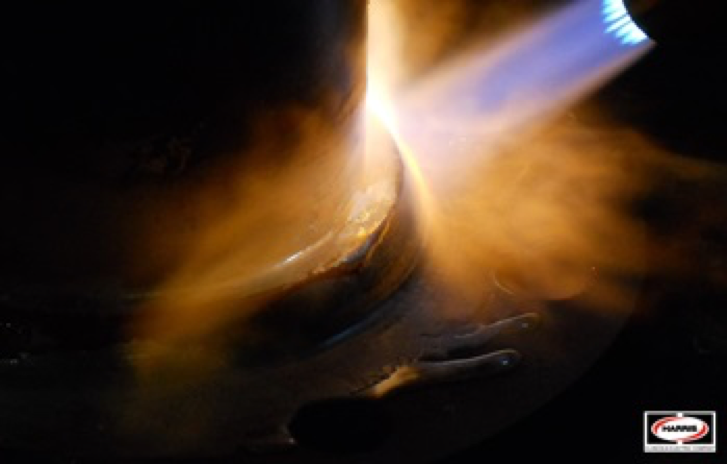
Brazing requires that the filler metal flow into a capillary between the two closely aligned base metals to be joined. In the case of copper-phosphorus braze alloys – these base metals are usually copper or brass, and joint integrity is dependent on a number of factors in addition to the choice of filler metal.
Phos-copper, and phos-copper-silver brazing alloys – such as Harris Stay Silv®alloys, Dynaflow® and Blockade® – are used for joining copper, brass and bronze only. You never want to join steel, cast iron or stainless steel with a phosphorus containing braze alloy; simply put the connection provides limited strength.
Medical gas copper oxygen line installations to NFPA 99 require using a phos-copper BCuP brazing alloy conforming to AWS A5.8 without flux. A nitrogen purge is also required during brazing. For copper to brass applications a flux is required. For these connections apply the flux sparingly to avoid getting flux inside the lines.
Other environments such as boiler houses, paper mills, and natural gas lines have high concentrations of sulfides or sulfur. Sulfides attack the phosphorus in the phos copper brazing alloy and can result in leaks. When joining material exposed to a sulfur environment you should use a high silver brazing alloy such as Harris Safety Silv®.
The temperature at which the filler metal flows and the skill of the operator in adding filler metal at the correct temperature are important. Proper cleaning of the base metal before brazing and avoiding excess oxidation during heating are contributing factors in joint integrity.
All of the factors that contribute to joint integrity must be properly controlled to assure reliability of a brazed joint.

